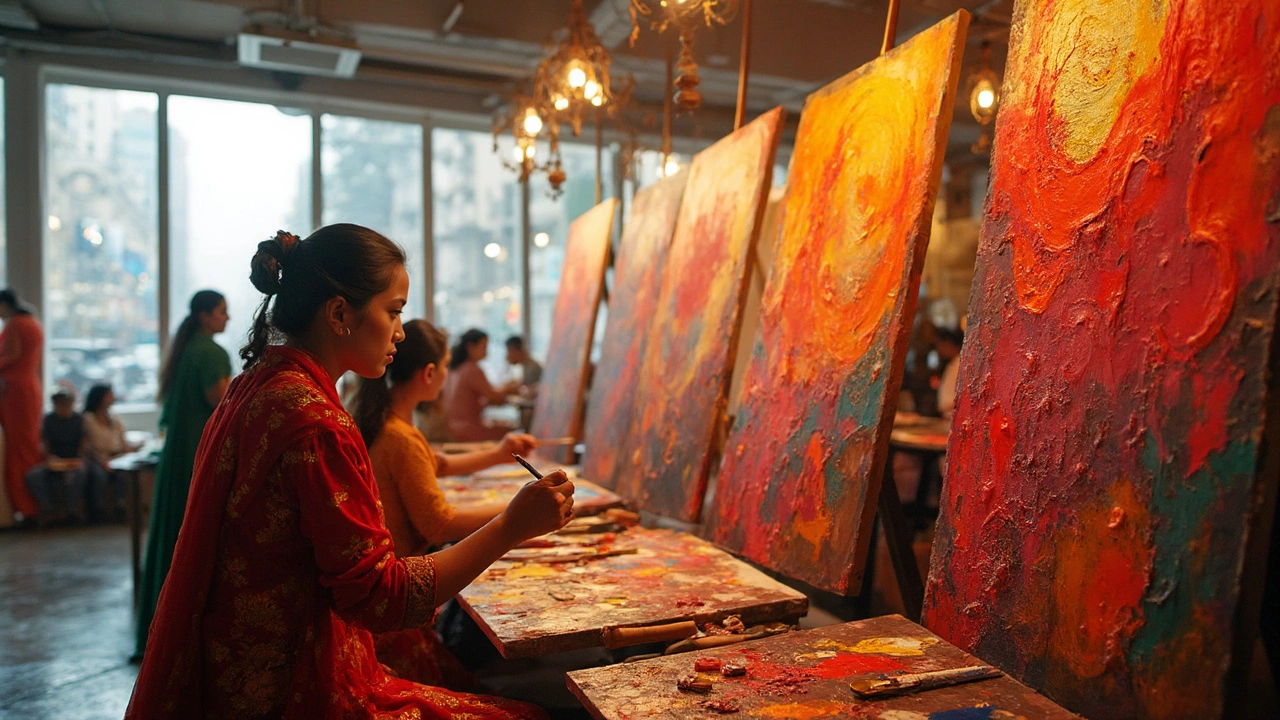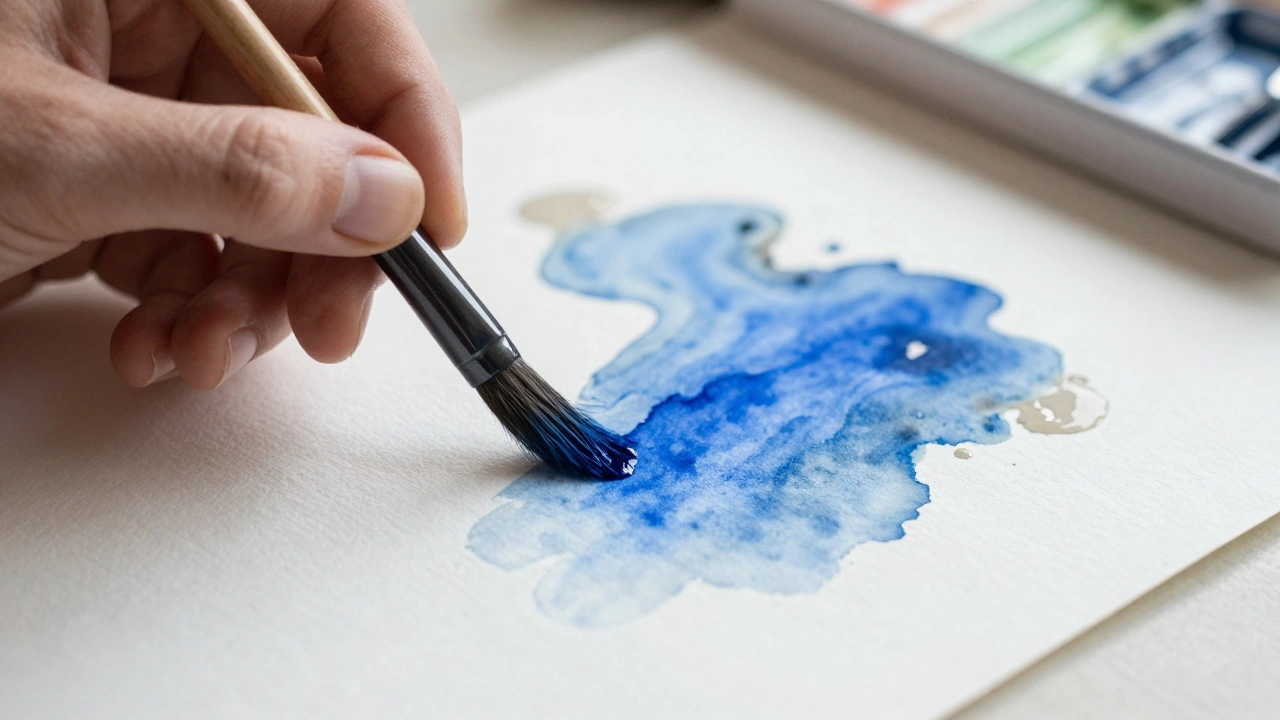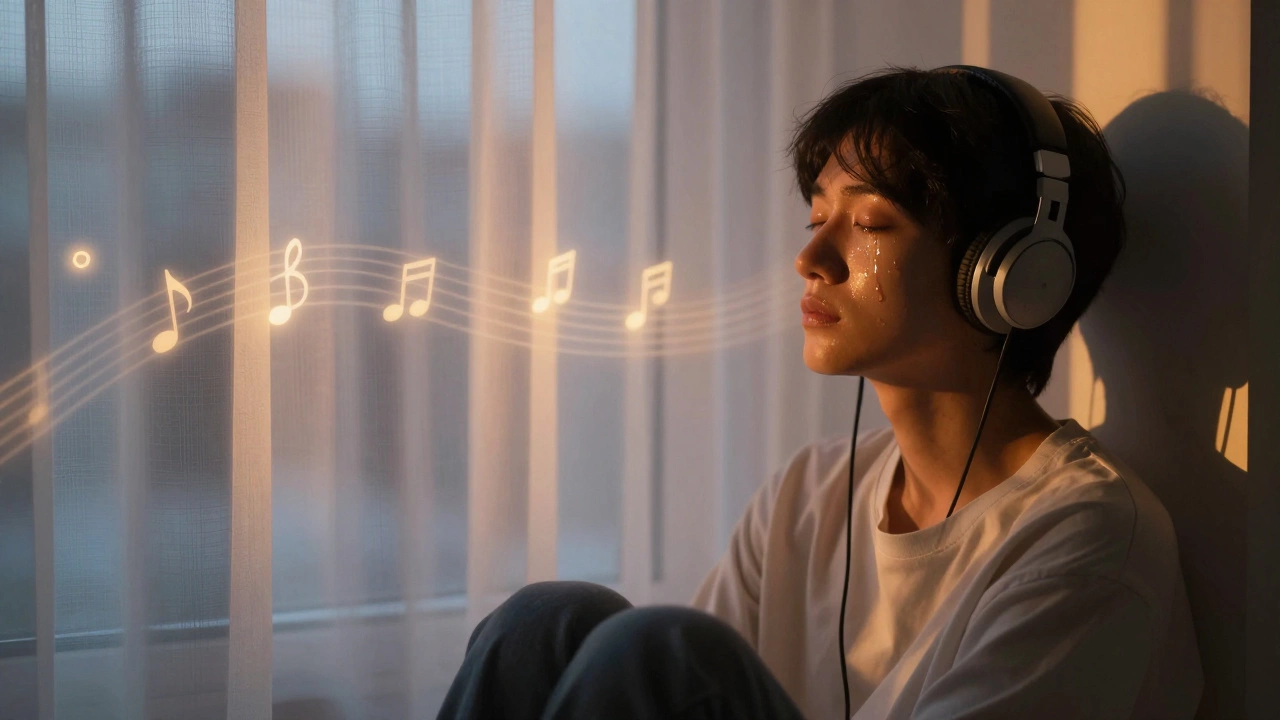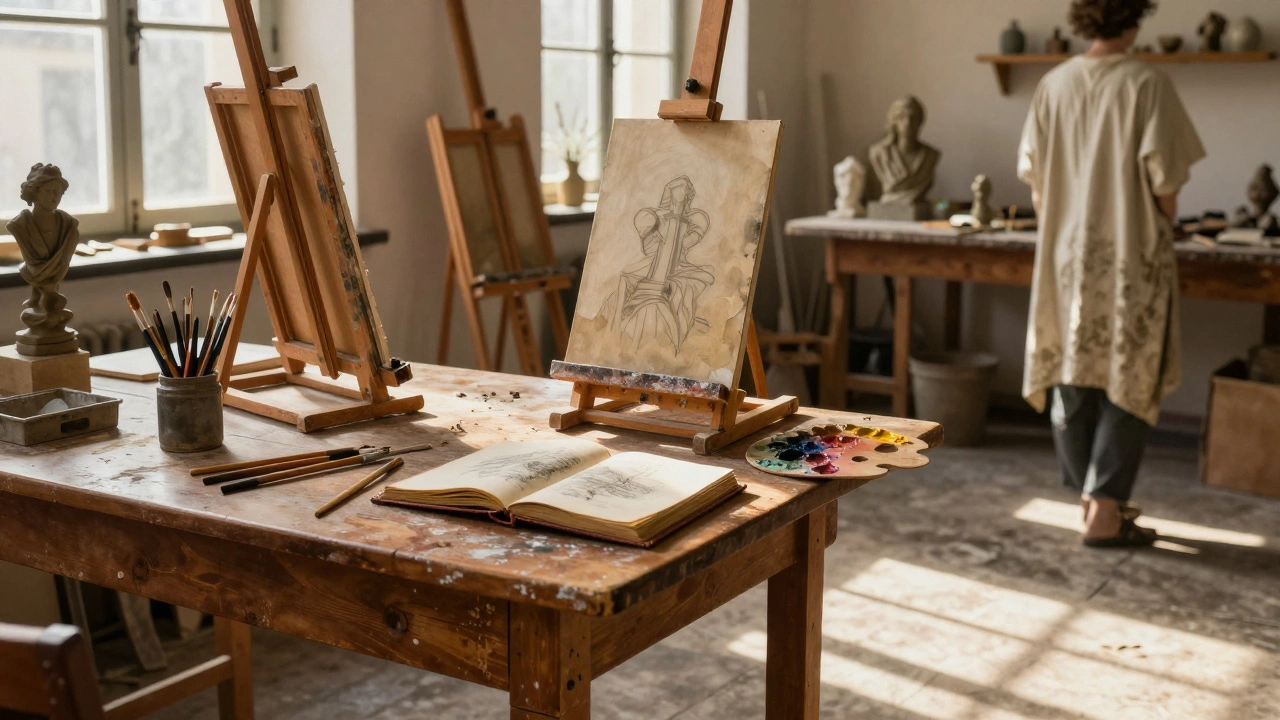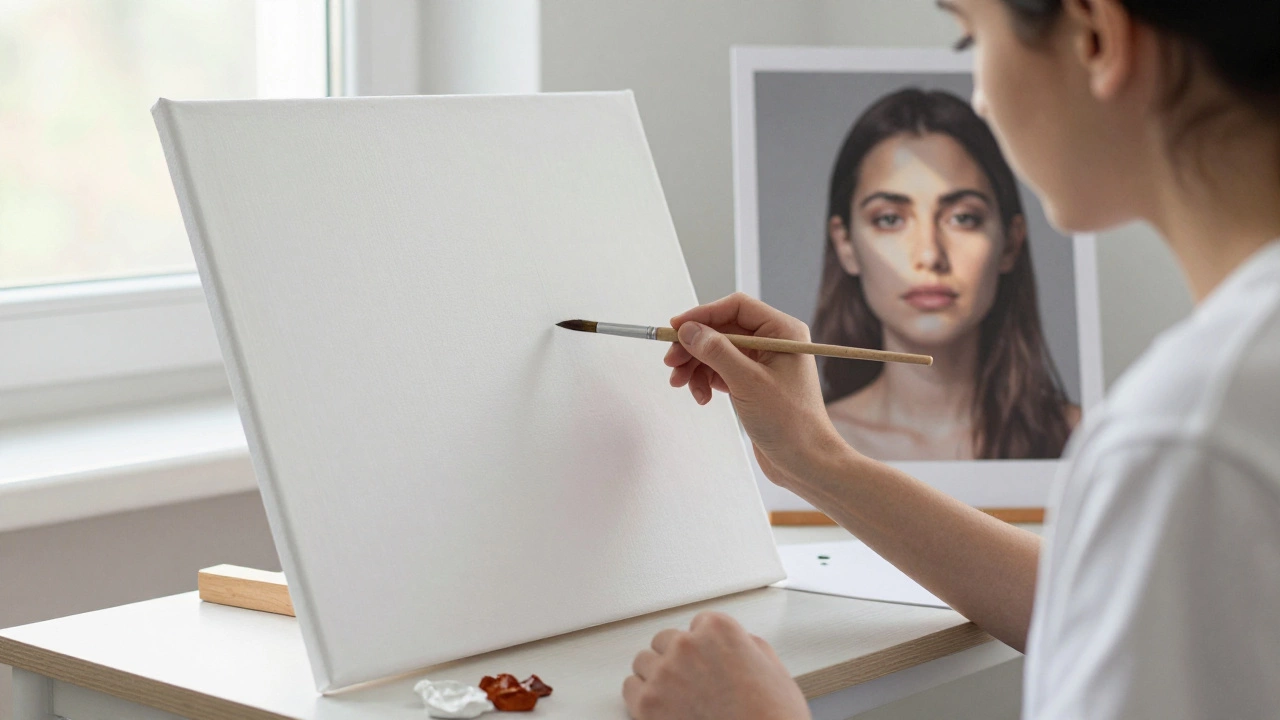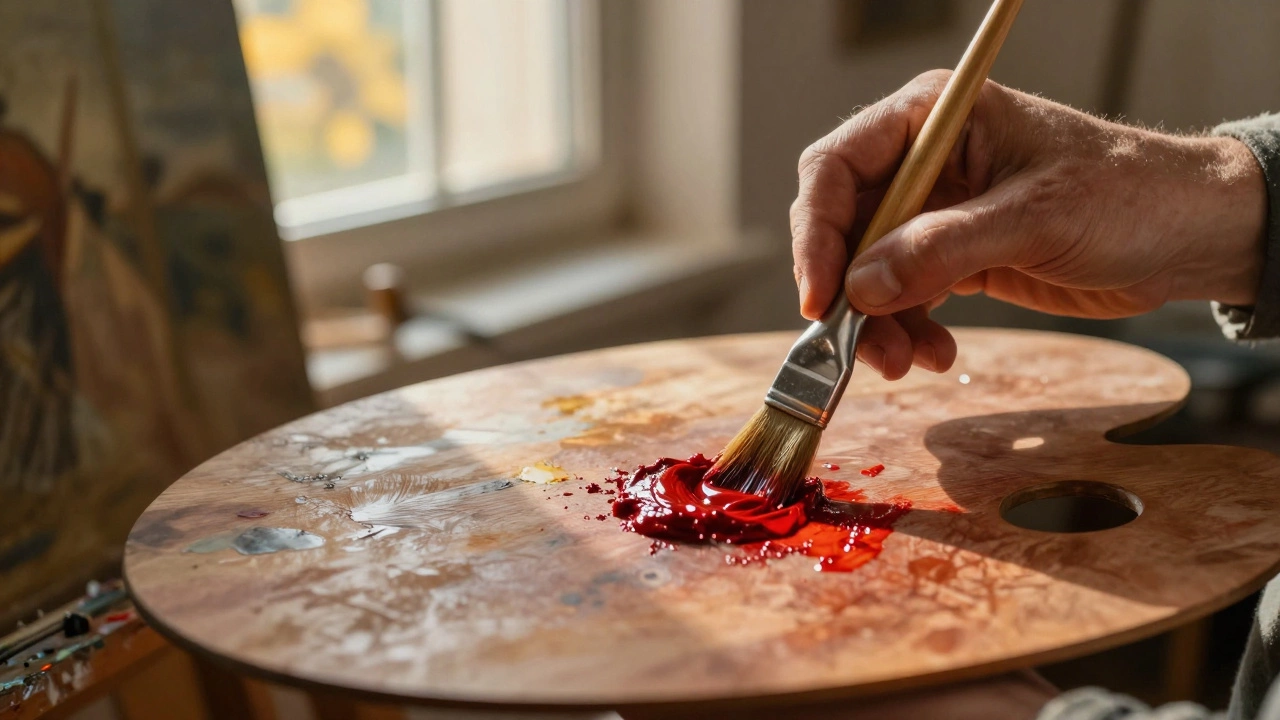Abstract art isn't just blobs of color thrown onto a canvas—it's a dynamic form of expression that fuels curiosity and personal exploration. It skips traditional rules and goes straight for the heart, often leaving viewers with more questions than answers. So, what's the draw? At its core, abstract art allows for a limitless expression of ideas, feelings, and emotions without the constraints of realistic representation.
Viewers are often drawn to abstract art because it invites them to interpret it in their own unique way. There’s no right or wrong answer. This open-ended nature encourages people to use their imagination and make personal connections to what they see. It's a field where neither the artist nor the viewer is boxed in by expectations, leading to an almost meditative experience.
- The Essence of Abstract Art
- Emotional Connection
- Freedom in Expression
- Interpretation and Imagination
- Cultural and Historical Context
- Appreciating Abstract Art
The Essence of Abstract Art
Abstract art, in its simplest form, doesn't aim to represent the physical world directly. Instead, it's all about using colors, shapes, and forms to achieve its effects. This genre breaks away from traditional guidelines, allowing artists to express complex ideas and emotions that might be challenging to capture with realistic art.
Abstract art emerged in the early 20th century, with pioneers like Wassily Kandinsky and Piet Mondrian leading the charge. Kandinsky believed that using non-objective forms could better convey emotions, while Mondrian utilized grids and blocks of color to create harmony and balance. Since then, abstract art has continued to evolve and capture the attention of audiences around the world.
What's the Idea Behind It?
The root of abstract art lies in the idea of freeing oneself from traditional viewpoints. Artists are encouraged to explore their inner thoughts and emotions, translating them into their work. This movement can tap into human emotions on a more instinctual level, letting both creators and viewers experience art beyond literal interpretations.
How Abstract Art Sets Itself Apart
While abstract art might seem random at first glance, there's often an underlying rhythm and intention behind every brushstroke. Some pieces might focus on the interplay of different colors, while others may hone in on geometric shapes or fluid forms. The key is that each artwork invites viewers to dive deeper into their own interpretations.
- Freedom in Expression: Artists aren't bound by rules.
- Limitless Interpretation: Every person sees something different.
- Emotional Engagement: Art creates an emotional response.
So, when you're taking in an abstract piece, remember that its essence lies in challenging the norms and invigorating the imagination. The beauty of it? No two experiences are ever the same, making abstract art a truly endless source of wonder.
Emotional Connection
Why does abstract art make us feel things that we can't quite put into words? It's all about how it speaks to our emotions directly. Abstract art bypasses the logical part of our brain and connects with our emotions straight away. This is because it relies more on colors, shapes, and textures to convey feelings. These elements can stir memories, provoke thoughts, or evoke emotions like joy, curiosity, or even tension.
Take, for instance, how different colors can affect our mood; bright shades can energize us, while cooler tones might calm us down. Art appreciation happens on a deeply personal level; a single piece might evoke very different emotions in different people—it's all about personal perspective and previous experiences.
Did you know that a study by neuroscientists found that looking at abstract art activates the brain areas linked to the reward circuit? This might help explain why we feel drawn to certain pieces even when they don't depict anything specific. It's like our brain gets a hit of satisfaction when we engage with abstract art.
To better emotionally connect with abstract art, try these tips:
- Focus on the first emotion that comes to mind when you view the artwork.
- Consider why you think the artist chose specific colors or forms.
- Discuss your thoughts with someone else—different perspectives can enrich your own experience.
Ultimately, the emotional power of abstract art is in its ability to allow everyone to have their own unique experience. It invites us to feel, reflect, and react without boundaries.
Freedom in Expression
One of the most exciting aspects of abstract art is the sheer freedom it offers. Unlike traditional art forms that require strict adherence to specific techniques or storytelling elements, abstract art celebrates the liberation from these constraints. Artists aren't required to keep objects true to life. Instead, they have the power to bend reality and blend colors and shapes in ways that feel right to them.
This freedom allows artists to fully explore their creativity and bring out emotions or ideas that might otherwise be trapped inside. Some abstract artists start their work with a clear emotion or concept in mind, while others rely on spontaneous creativity, letting their brushstrokes guide them to a finished piece. This spontaneity is what makes abstract art so distinctive and deeply personal.
Inspirations and Techniques
Artists often draw inspiration from their surroundings, emotions, or even geometric patterns. They might explore different mediums—from thick oils to fluid acrylics—or even mix various materials to create multilayered textures. Techniques such as drip painting or pouring, popularized by artists like Jackson Pollock, showcase how abstract art can break conventional bounds.
Each artist's interpretation of abstract art is unique, contributing to the art form's varied landscape. Some may focus on color contrasts, while others experiment with form and space. It’s this diversity within abstract art that keeps it ever-evolving and captivating to both artists and viewers.
Encouraging Creativity
Learning to appreciate the freedom within abstract art can encourage people to break free of their own mental barriers. You don't have to be an artist to feel inspired; just exploring abstract art can spark novel ideas in other aspects of life. It's a reminder that stepping outside conventional norms can lead to innovative thoughts and solutions.
For those looking to delve further into their appreciation of abstract art, try visiting local galleries or museums that feature abstract works. Often, engaging with art in person provides a new perspective, offering an enriching experience that's hard to capture in photographs or reproductions.
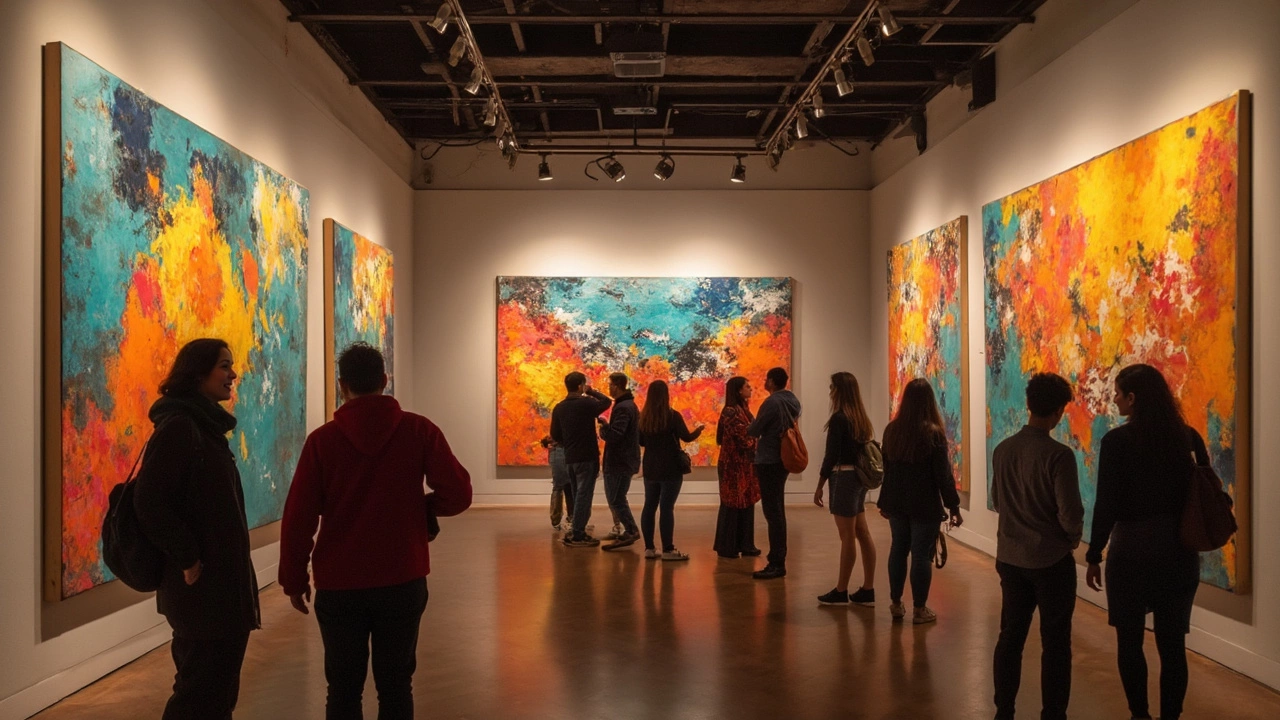
Interpretation and Imagination
One of the most captivating elements of abstract art is its ability to engage the viewer's imagination and interpretation. Unlike traditional art forms where the meaning is often clear and direct, abstract art leaves space for personal vision and creativity. This open-ended nature allows individuals to participate in the art-making process by inferring their own meanings and connections.
Consider a famous piece like Jackson Pollock's drip paintings. To some, they might seem like chaotic splatters of paint, but to others, these works evoke feelings of movement, energy, or even specific emotions. Each viewer brings their own experiences and feelings into the interpretation, making each encounter unique.
The Role of Culture and Background
Your cultural background and life experiences play a huge role in how you perceive abstract art. For instance, a person with a keen interest in nature might see landscapes in the swirls of paint, while someone who values urban life might interpret the same work as cityscape emotions.
Freeing the Mind
Abstract art also offers a rare opportunity to free the mind. By challenging conventional structures, it encourages viewers to think beyond the obvious and dive into a world of possibilities. This freedom can be incredibly liberating, both for the artist and the audience.
Sometimes, galleries will provide no titles or descriptions for abstract art pieces, deliberately urging viewers to form their own interpretations. This might seem puzzling at first, but it's actually an invitation to explore one's own thoughts and feelings.
Tips for Engaging with Abstract Art
- Approach with an open mind and leave preconceived notions at the door.
- Take your time—let your eyes wander over the piece, noting what catches your attention.
- Reflect on what emotions or memories the work stirs in you.
- Don't hesitate to discuss your thoughts with others; you'll often discover new perspectives this way.
Cultural and Historical Context
Abstract art might feel like a modern invention, but it actually has pretty deep roots. Let's zoom in on the early 20th century when the world was going through a lot of change—socially, politically, and technologically. People wondered what came next, especially since art had always been so focused on realism.
During this time, artists like Wassily Kandinsky and Piet Mondrian started exploring the idea of abstraction. They moved away from depicting recognizable objects, pushing the boundaries of abstract art to express emotions, ideas, and even spiritual responses. Kandinsky believed that colors and forms could directly communicate feelings, bypassing the need for literal descriptions. In his words, "Color is the keyboard, the eyes are the harmonies, the soul is the piano with many strings," highlighting the emotional power of art.
"There is no must in art because art is free." – Wassily Kandinsky
As World War I and II rocked the world, abstraction gained momentum. With so much uncertainty, artists found solace in abstract expressionism. This movement was all about spontaneous and automatic creativity, with famous artists like Jackson Pollock and Mark Rothko leading the charge. It gave folks a new way to process what was happening around them, especially during such turbulent times.
Today, abstract art's influence is seen globally, crossing cultural boundaries. It's not just limited to paintings but spills into other media like sculpture, digital art, and even interior design. Thanks to this art form's unique ability to be open to interpretation, it appeals to a diverse range of people from all sorts of backgrounds, making it as relevant now as it was a century ago.
Appreciating Abstract Art
Learning to appreciate abstract art can feel a bit like learning a new language. At first, you might just see random shapes and colors, but as you learn more and take time to look deeper, it starts to make sense—or at least become more meaningful. There are no cheat codes to appreciating abstract art, but here are some pointers to get you started.
Engage with Your Emotions
Abstract art is all about feelings. When you're standing in front of a piece, take a moment to note what emotions it stirs up in you. Do you feel calm? Curious? Maybe a bit unsettled? A 2023 study revealed that people connected with abstract art more strongly when they focused on their emotional responses rather than trying to understand the artist's intention. Let your instincts guide you here.
Know the Basics of Art Elements
Understanding basic elements like color, form, line, and composition can significantly enhance your experience. Colors in abstract art often carry their own meanings. For example, blue might evoke calmness, while red could suggest intensity. Observing how these elements come together can lead to deeper appreciation.
Look at the Bigger Picture
Step back and take in the artwork as a whole. Try to focus less on the details and more on how everything works together. What does the overall composition convey? Sometimes, the simplest interpretations are the most rewarding.
Do Some Research
Getting to know the artist and the context of their work can provide new perspectives. Dive into the history of the abstract art movement and its pioneers like Wassily Kandinsky, who believed that color could invoke a spirit in the viewer.
| Year | Artist | Famous Work |
|---|---|---|
| 1911 | Wassily Kandinsky | Composition V |
| 1947 | Jackson Pollock | Full Fathom Five |
| 1965 | Bridget Riley | Movement in Squares |
Remember, the key is to approach abstract art with an open mind and a willingness to feel. Over time, you'll find your appreciation growing, and maybe you’ll even discover new things about yourself along the way.
